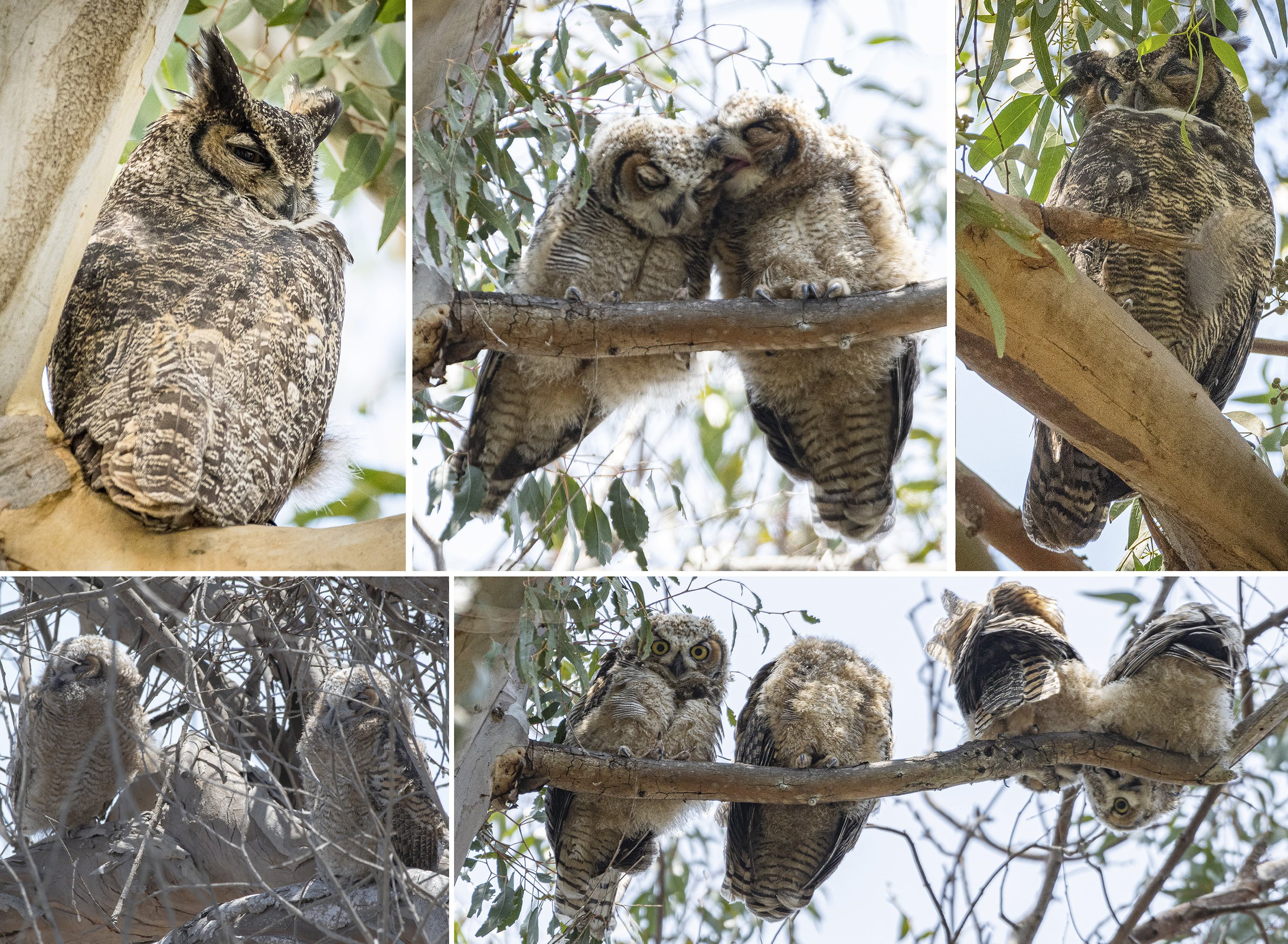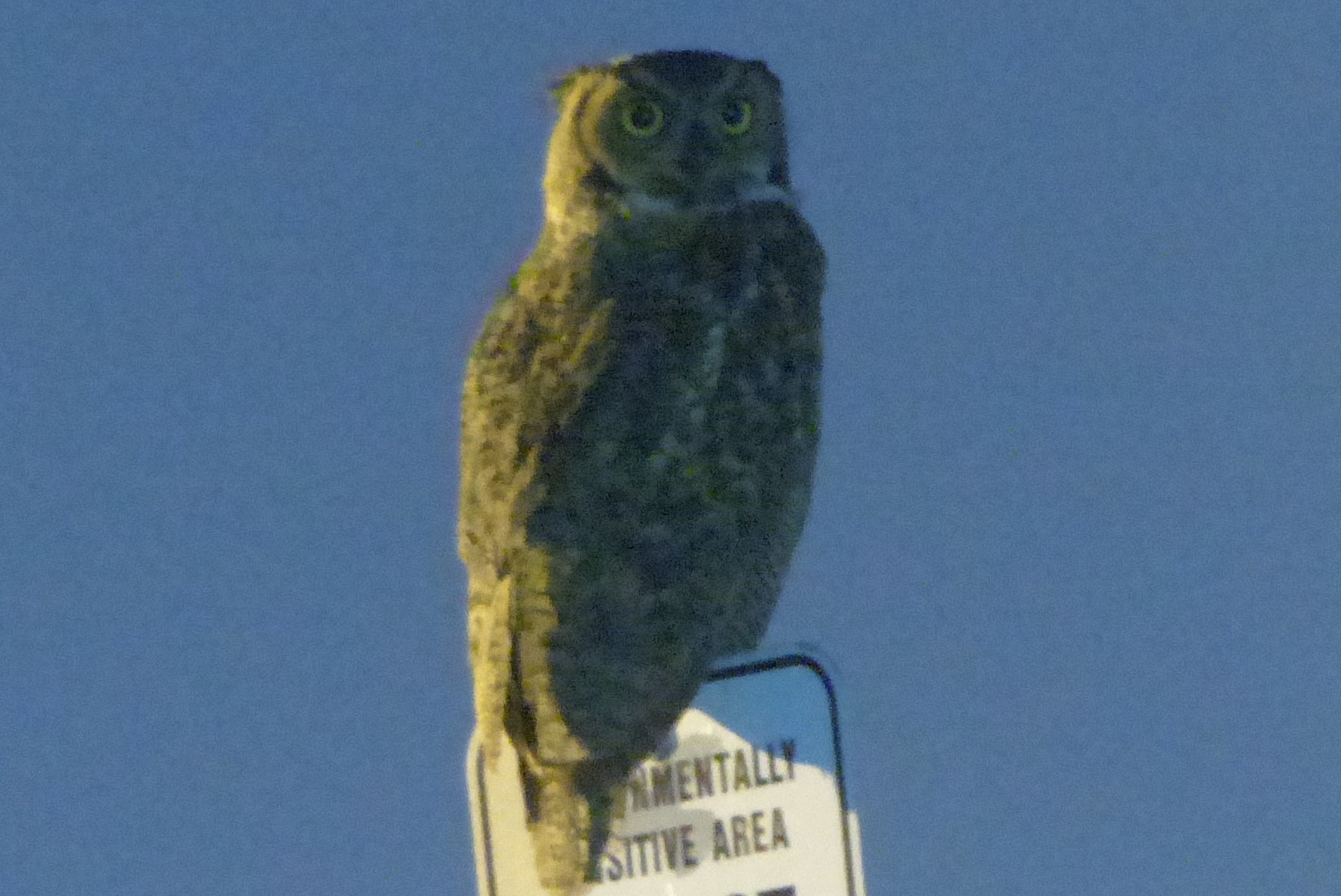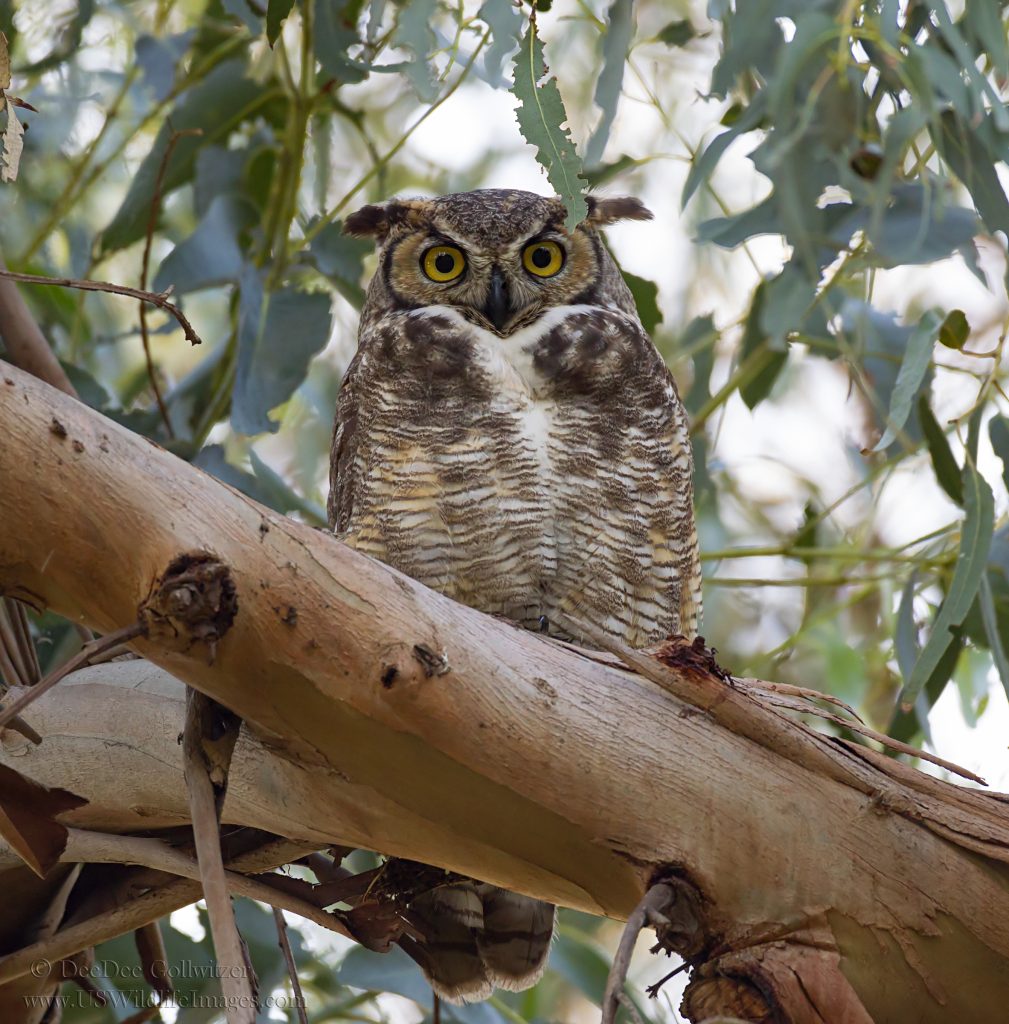
Great Horned Owl
The Great Horned Owl is a habitually successful, resident breeding bird species in Huntington Central Park. Multiple groves of mature trees and open foraging areas provide an ideal habitat for these highly secretive nocturnal birds of prey.
Great Horned Owls, like many raptors, are thought to be monogamous and mate for life. The distinctive, low, deep hooting of both males and females is primarily heard nighttime from December through February when the bonded pairs are engaging in a lot of vigorous hooting as they establish territories and court. Like most raptors, Great Horned Owls are early nesters and will lay their eggs from mid-February until late March, before most other birds have even established territories.
Opportunistically, these owls simply reuse an old nest of a hawk or other large bird. They can also nest in natural tree hallows, stumps, or abandoned structures. While the male does the hunting for food while the female sits on the eggs, both parents will feed the babies after they hatch.
The Great Horned Owl is nocturnal, but is occasionally actively hunting in the late afternoon or early morning. Even though they are fairly large birds, their soft feathers and special wing structure makes them able to fly swiftly and silently. They have excellent night vision; but because their enormous golden eyes can’t move in their sockets they must rotate their heads in order to look around and can pivot up to 270 degrees.
This large barrel shaped owl stands up to 24” tall and has two high or peaked feather groupings on the top of its head, which may resemble horns or possibly ears, but they are neither. Their concealed ear openings are further down on the sides of their heads and like many owls, one ear is lower than the other. The asymmetrical ear placement was adapted to improve their highly acute hearing, aiding to accurately pinpoint prey location. Extraordinary vision and hearing along with stealthy silent flight and powerful, sharp talons make the Great Horned Owl a skillfully lethal hunter. Their diet of mammals, primarily rodents helps to keep rat, mouse, squirrel and rabbit populations in check within our city parks.
With care, you can personally view one of these camouflaged birds of prey hidden within in our park. When walking under our soaring, mature trees keep an attentive eye on the ground looking for tiny owl pellets (small regurgitated balls of indigestible bones and fur) that are coughed up daily by the Great Horned Owls concealed in the dense branches directly overhead as they perch in rest during daylight hours preparing for their nighttime hunt.
Raptor Foraging Area – A designated Raptor Foraging Area has been identified and is being enhanced on the hilltop area adjacent to the Urban Forest. This marked, designated area has been set aside in a mitigation agreement in order to provide suitable habitat for a variety of birds of prey dependent upon natural open field foraging with drought tolerant CA native plants suited to their survival needs.
Huntington Central Park, with its 50-year history, continues to be host to a variety of raptors/birds of prey including hawks, falcons, owls, vultures and eagles. We will continue to feature selected descriptions of the dozen or more that have been counted in our park.
Bird gallery





